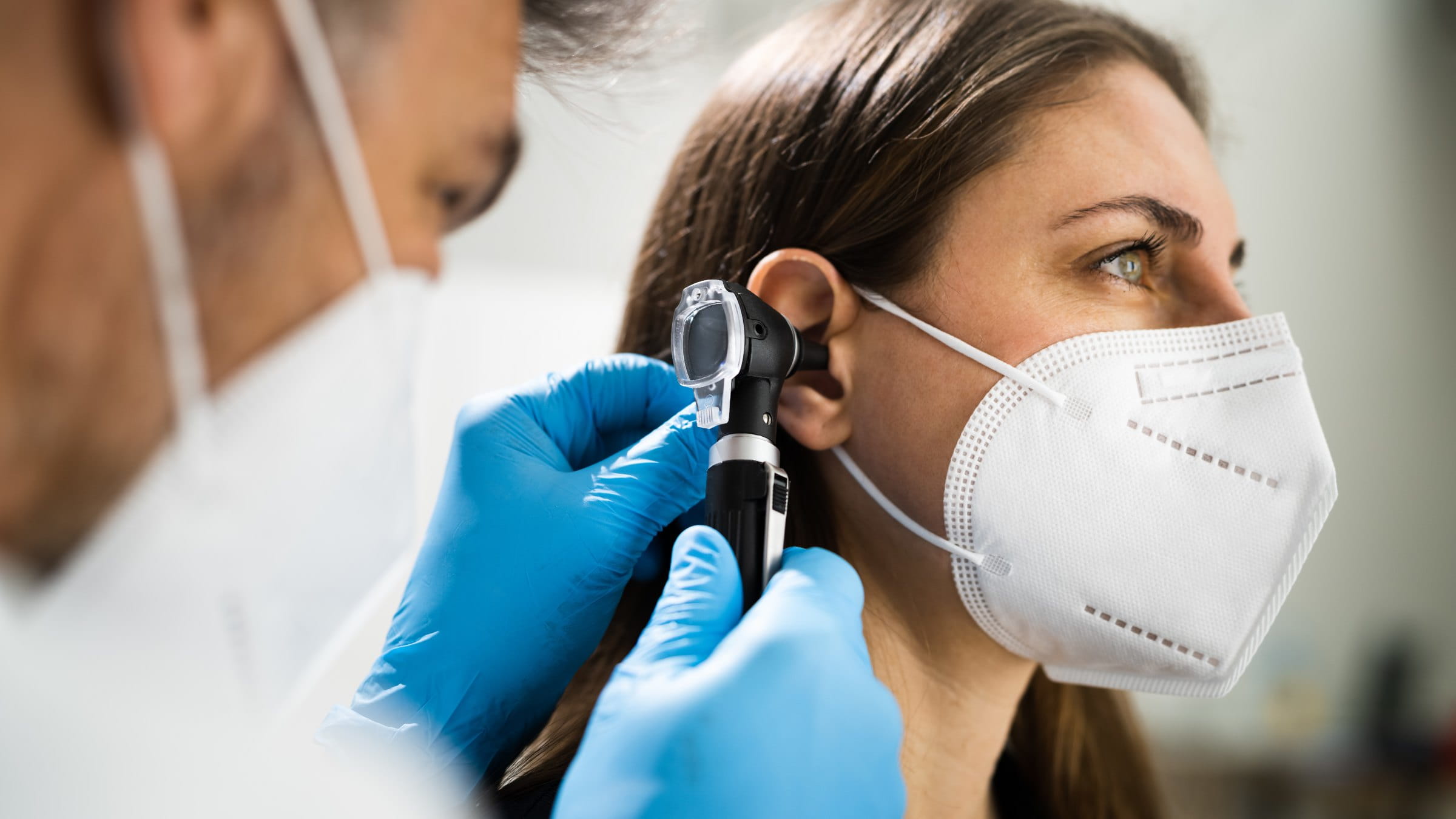
An acoustic neuroma, also called a vestibular schwannoma, is a rare, noncancerous tumor that forms between the ear and the brain. At The Ohio State University Wexner Medical Center, we treat between 150 and 200 patients with acoustic neuromas every year. These tumors most commonly occur in people between the ages of 30 and 60, but we see patients ranging from teenagers to 90-year-olds.
What are the symptoms of an acoustic neuroma?
The classic symptom for an acoustic neuroma is hearing loss that’s worse in one ear than the other. This is different from hearing loss from factors like noise exposure, which usually occurs over time and at the same rate in each ear.
You may also experience tinnitus (ringing in the ears), dizziness, balance problems or headaches. If you have any of these symptoms, or if you experience gradual or sudden hearing loss on one side, seek medical help immediately. The faster we catch an acoustic neuroma, the smaller it’s likely to be, and the easier it is to treat. Early intervention leads to the best outcomes in patients of all ages.
How is acoustic neuroma treated?
Once an MRI has confirmed the presence of a tumor, a multidisciplinary team of experts at the Ohio State Wexner Medical Center will work with you to develop a customized treatment plan. There’s no one-size-fits-all treatment for acoustic neuroma. It all depends on your age, the size and location of your tumor, and your personal preferences.
As an otolaryngologist and neurotologist, it’s important to me and my team that you have the opportunity to ask questions, seek second and third opinions, and carefully consider the potential benefits and side effects of each treatment option. I’ll make a recommendation based on my experience and expertise, but the decision is ultimately up to you.
There are three primary treatment options for acoustic neuromas:
1 Observation
If you have a small tumor that’s not causing any symptoms beyond hearing loss (which we can’t reverse), we’ll likely recommend observing it over time. In this case, you’ll undergo a second MRI in about six months, and if there’s no change, you can return annually for a follow-up MRI.
2 Radiation therapy
Because acoustic neuromas are non-cancerous, chemotherapy is usually ineffective at reducing the size of a tumor. By delivering a precisely-targeted dose of radiation, we can prevent the tumor from growing any larger without damaging any surrounding tissue. Radiation therapy, which is a non-surgical procedure, is typically an option we recommend for patients whose tumors are large or growing. If your follow-up MRI shows no increase in tumor size, we won’t recommend radiation therapy.
We’re also far more likely to recommend this option for older patients than younger ones, who would experience any potential side effects for a longer period of time.
3 Surgery
If your tumor is large or growing, we’ll discuss surgery as an option. At Ohio State, we offer three different surgical approaches for tumor removal, depending on the precise location of the tumor and our ability to access it. We can enter above the ear, behind the ear or through the ear bone.
Because of our customized, multidisciplinary approach to surgical treatments, our patients have low complication rates, less time in the operating room and shorter hospital stays. In an average year, we perform about 50 of these surgeries.
Can my hearing be saved?
In many cases, the tumor has already caused substantial, irreversible hearing decline. We can only preserve — not improve — your hearing. Our neurotology, neurosurgery, audiology, radiation oncology and neurology teams combine efforts to give you the best surgical outcome possible. In some cases, we might even recommend placement of a cochlear implant during the surgery to provide hearing recovery. We’re as concerned as you are about not only removing your tumor but maintaining your quality of life during and after treatment. While there are no guarantees with complex surgeries, you’re in good hands at the Ohio State Wexner Medical Center, ranked among the top hospitals in the nation for ENT and neurosurgery care.

Experiencing hearing loss, balance issues or similar symptoms?
Ohio State's experienced ENT team can help.
Schedule an appointment today




